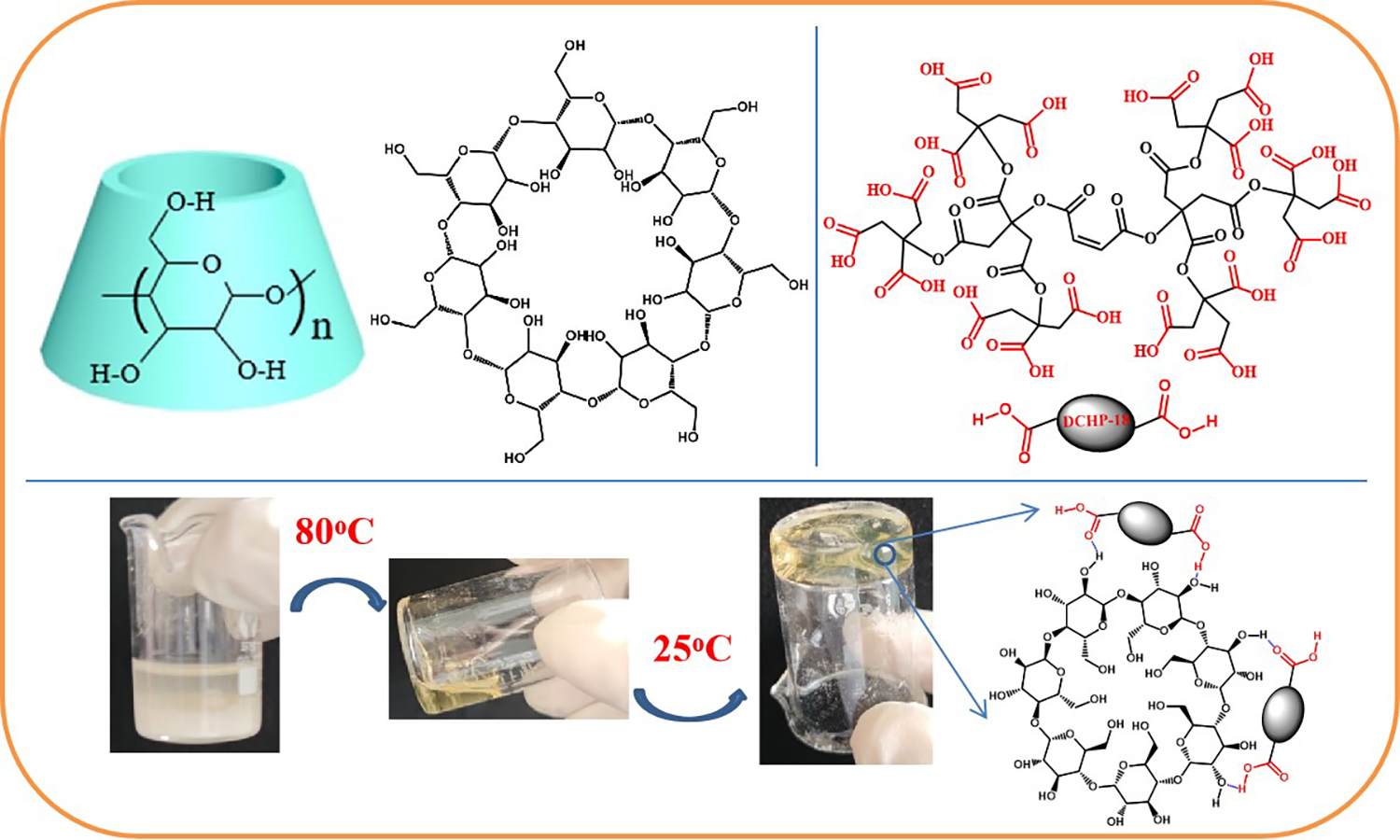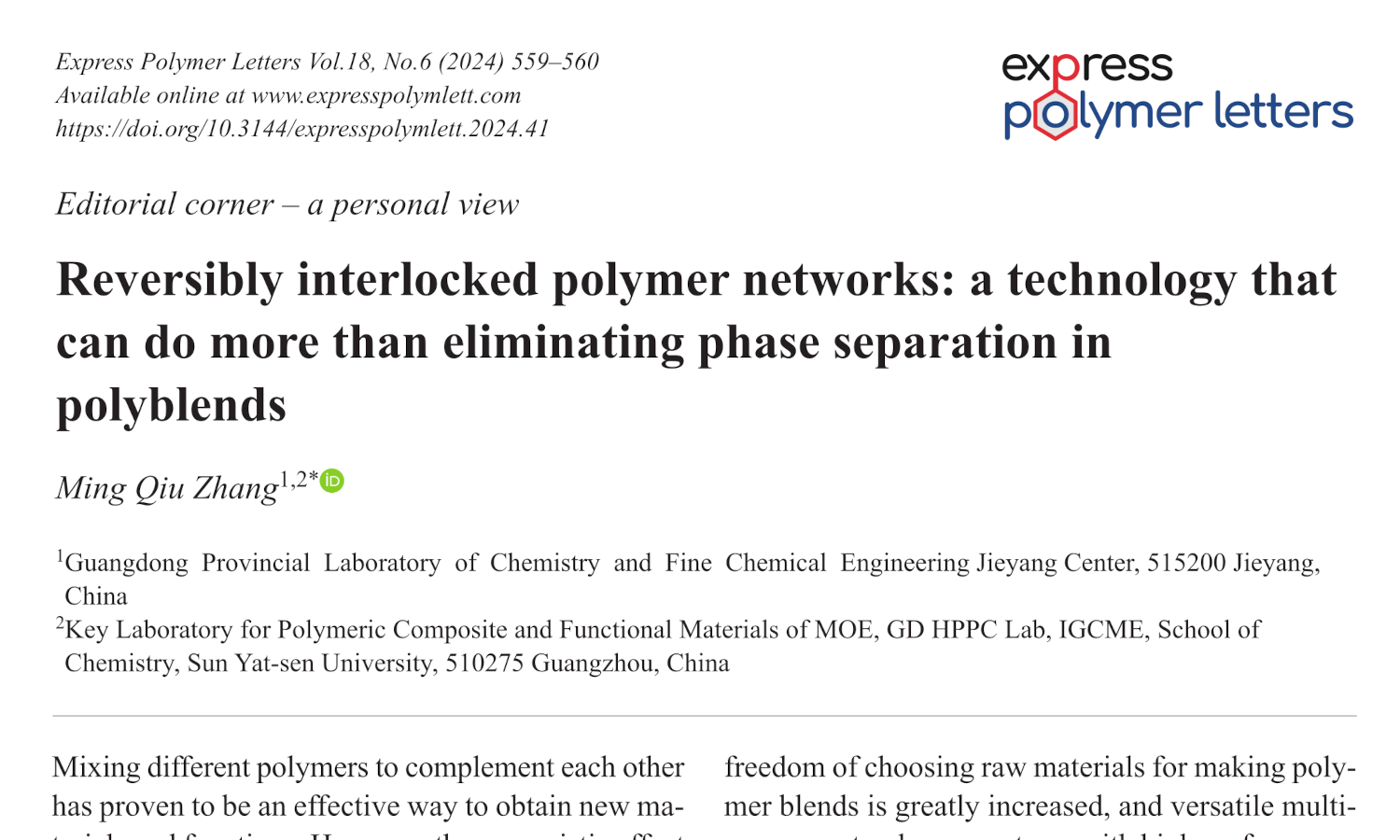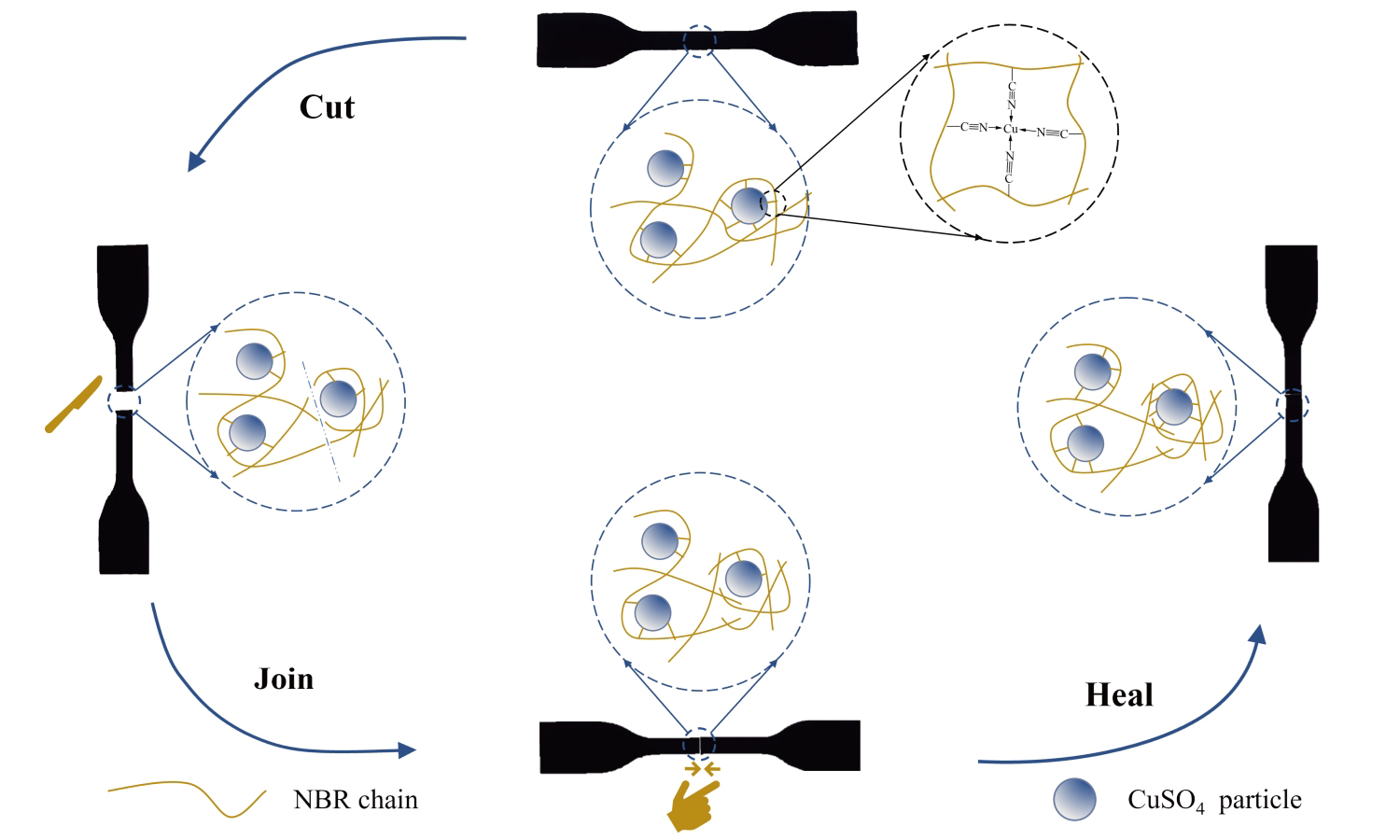Low-temperature supramolecular adhesives based on hyperbranched polyester
Vol. 17., No.12., Pages 1200-1211, 2023
DOI: 10.3144/expresspolymlett.2023.91
DOI: 10.3144/expresspolymlett.2023.91
GRAPHICAL ABSTRACT

ABSTRACT
Adhesives have been widely applied in various fields. However, most industrial adhesives contain organic solvents, which are toxic and difficult to clean after use. Importantly, most adhesives are used in a relatively small temperature range (0–50 °C), which is due to the fragmentation of the morphology and properties of supramolecular polymer gels at low temperatures. Most of the supramolecular adhesives need to be heated during the bonding process, which cannot meet the requirements of low-temperature adhesion in daily life and industry. In this study, based on the concept of using deep eutectic solvents (DESs) as a platform, cyclodextrin (β-CD) and carboxyl terminated hyperbranched polyester (DCHP) were used to prepare solvent-free supramolecular polymer gel (CD-DCHP), which was non-toxic and easy to clean. Due to the joint action of deep eutectic solvent and supramolecular polymer structure, CD-DCHP showed excellent mechanical properties, super strong adhesion (up to 4.55 MPa on glass surface), and excellent low-temperature performance (up to 1.64 MPa at –60 °C). This supramolecular polymer gel also showed excellent tolerance to acids, alkalis, and various organic solvents. It greatly expanded the application of DES and provided a new approach to the development of supramolecular adhesives.
RELATED ARTICLES
Ming Qiu Zhang
Vol. 18., No.6., Pages 559-560, 2024
DOI: 10.3144/expresspolymlett.2024.41
Vol. 18., No.6., Pages 559-560, 2024
DOI: 10.3144/expresspolymlett.2024.41

This is an editorial article. It has no abstract.
Yuan Gao, Weiran Zhang, Junhao Wang, Zishuo Wang, Zhaobo Wang
Vol. 17., No.10., Pages 1019-1030, 2023
DOI: 10.3144/expresspolymlett.2023.76
Vol. 17., No.10., Pages 1019-1030, 2023
DOI: 10.3144/expresspolymlett.2023.76

In this research, a nitrile-butadiene rubber (NBR) was prepared with excellent mechanical, self-healing and recycling properties by introducing metal-ligand coordination interaction. A coordination crosslinking network based on ligand bonding was successfully introduced in the NBR matrix by mechanical compounding. The dynamic reversibility of the coordination crosslinking network not only provides the vulcanizate with excellent mechanical properties but also confers a remarkable self-healing ability under high temperatures and recyclable property under mechanical shear, respectively. The sample, which was subjected to the complete cut, could be capable of restoring its original tensile strength after self-healing treatment. The self-healing efficiency of NBR vulcanizate is significantly dependent on the self-healing temperature and time, which can surprisingly reach 97% of the original tensile strength after self-healing treatment at 180 °C for 60 min. After the mechanical shear, the coordination crosslinking network is reversibly transformed. The tensile strength of the NBR vulcanizates after mechanical shearing recycling and re-vulcanization was similar to that of the original NBR vulcanizates. This research presents a novel approach to enhance the durability of rubber used in commercial applications, endowing it with reshaping and recycling capabilities and mitigating environmental issues associated with waste rubber.




